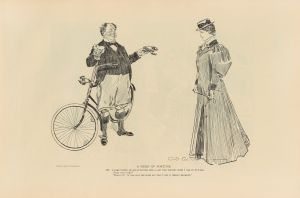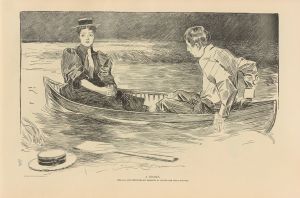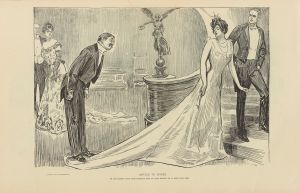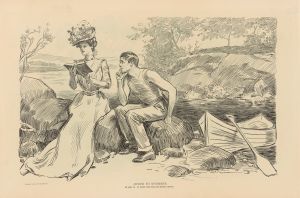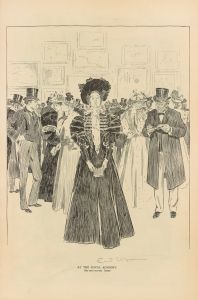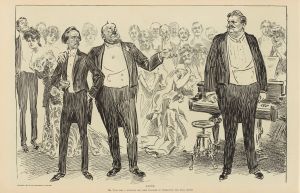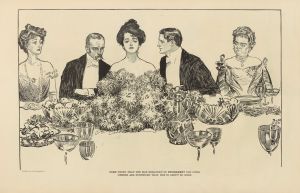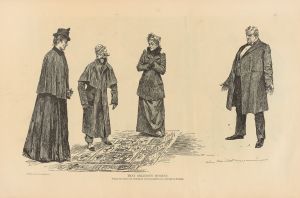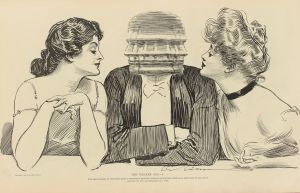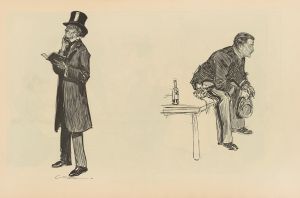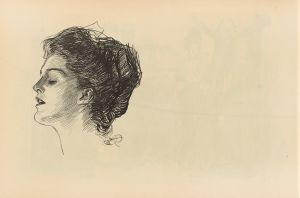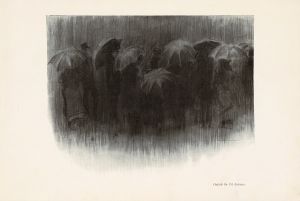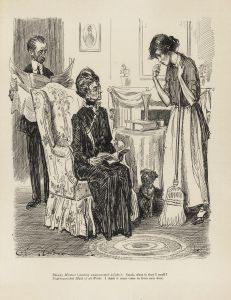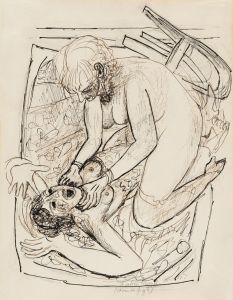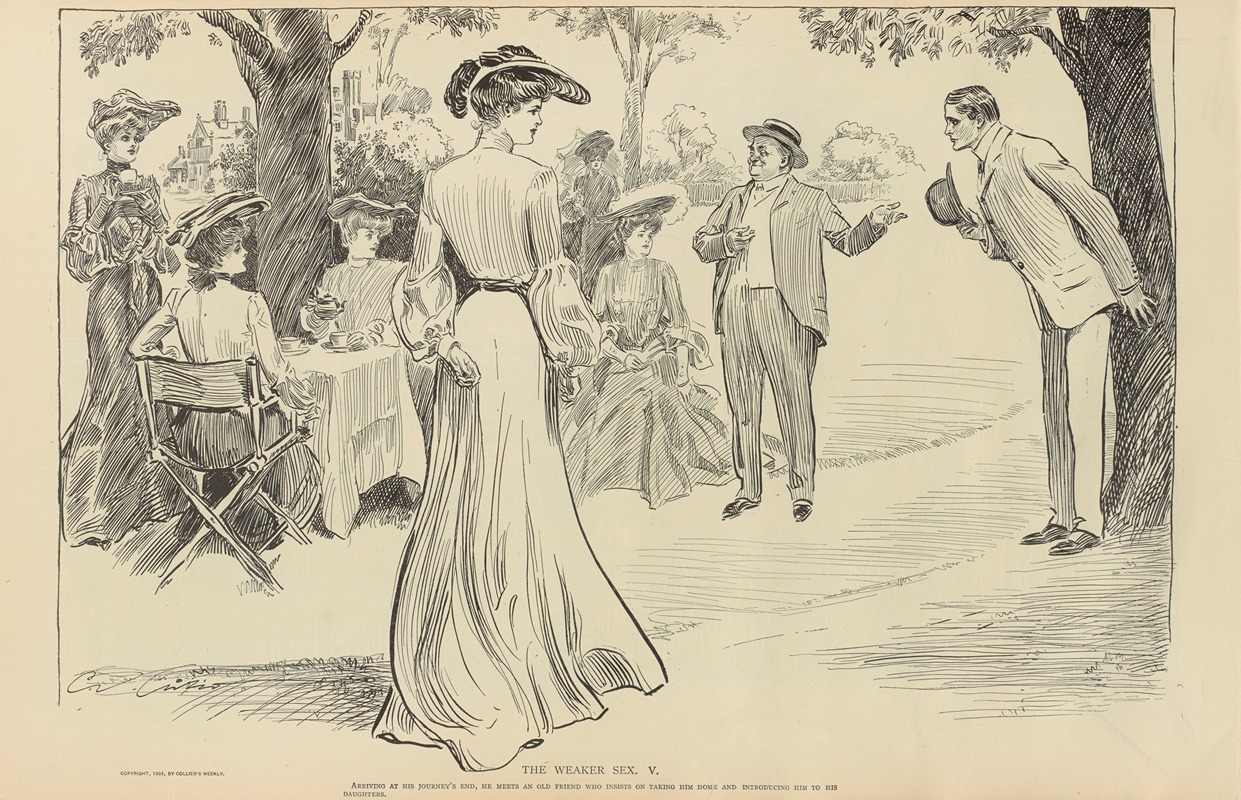
The weaker sex.—V
A hand-painted replica of Charles Dana Gibson’s masterpiece The weaker sex.—V, meticulously crafted by professional artists to capture the true essence of the original. Each piece is created with museum-quality canvas and rare mineral pigments, carefully painted by experienced artists with delicate brushstrokes and rich, layered colors to perfectly recreate the texture of the original artwork. Unlike machine-printed reproductions, this hand-painted version brings the painting to life, infused with the artist’s emotions and skill in every stroke. Whether for personal collection or home decoration, it instantly elevates the artistic atmosphere of any space.
Charles Dana Gibson was an influential American illustrator best known for his creation of the "Gibson Girl," a representation of the idealized American woman at the turn of the 20th century. Among his vast body of work, "The Weaker Sex.—V" stands out as a notable piece that reflects both his artistic style and the social commentary embedded in his illustrations.
"The Weaker Sex.—V" is part of a series of illustrations that explore the dynamics between men and women during the late 19th and early 20th centuries. Gibson's work often depicted women in a manner that both celebrated their beauty and critiqued societal norms. The title itself, "The Weaker Sex," is a phrase historically used to describe women, reflecting the gender biases of the era. However, Gibson's illustrations often subverted this notion by portraying women with strength, wit, and independence, challenging the stereotypes of the time.
In "The Weaker Sex.—V," Gibson employs his characteristic pen-and-ink technique, which is marked by precise lines and detailed shading. This style allows him to capture the subtleties of expression and posture, conveying complex emotions and social interactions. The composition typically features a central female figure, often surrounded by male counterparts, highlighting the contrast between societal expectations and the reality of women's capabilities and influence.
Gibson's work, including "The Weaker Sex.—V," was widely published in magazines such as Life, Collier's, and Harper's Weekly, reaching a broad audience and influencing public perceptions of gender roles. His illustrations were not only a reflection of contemporary fashion and beauty standards but also a commentary on the evolving role of women in society. The "Gibson Girl" became an iconic symbol of the era, representing a new, more liberated vision of womanhood that was emerging at the time.
While specific details about the individual illustration "The Weaker Sex.—V" are limited, it is understood within the context of Gibson's broader oeuvre. His work often depicted women in scenarios where they appeared to hold power over men, either through charm, intelligence, or social acumen. This inversion of traditional gender roles was both a source of humor and a subtle critique of the societal norms that labeled women as the "weaker sex."
Gibson's legacy as an illustrator is significant, as his work captured the spirit of an age and contributed to the dialogue around gender and identity. "The Weaker Sex.—V," like many of his illustrations, remains a testament to his skill in both artistry and social commentary. Through his depictions, Gibson played a role in shaping the cultural landscape of his time, leaving a lasting impact on the portrayal of women in art and media.





